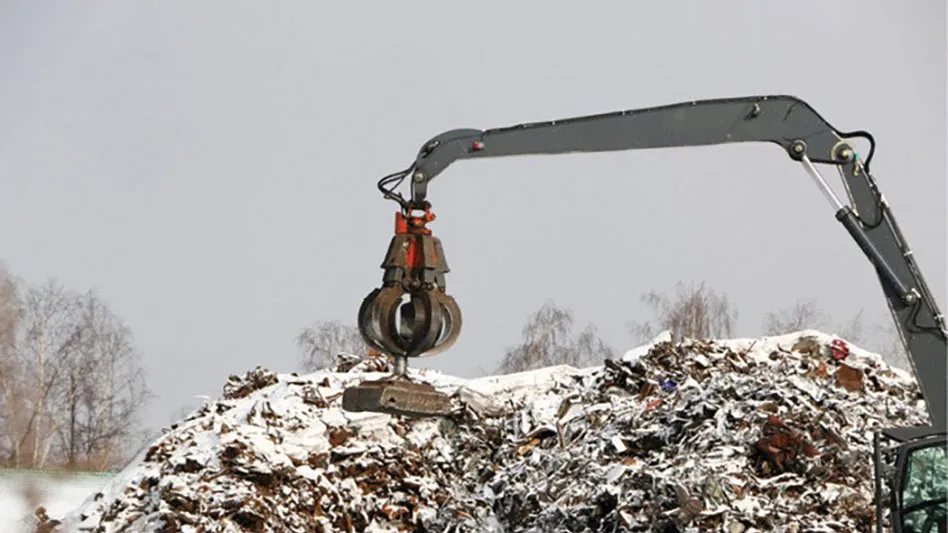
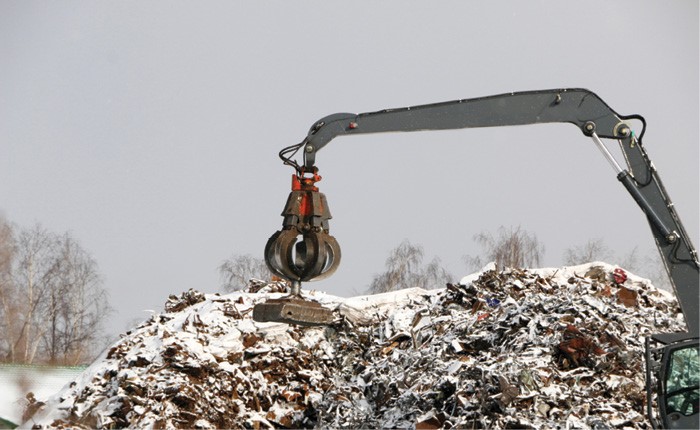
Although excavator attachments are built to be tough and long-lasting, the heavy-duty equipment can sometimes meet its match at harsh demolition sites.
From crushing concrete walls to cutting steel and rebar to moving heavy material around a job site, the day-to-day tasks required of excavator attachments are hard on even the hardiest equipment. To ensure these attachments live up to their full potential, the tools require diligent maintenance, inspections and, at times, new parts.
It sounds simple and straightforward, but Matt Hughes, account manager and South Central regional sales manager for Superior, Wisconsin-based Genesis Attachments, says companies vary widely in their maintenance of shears, pulverizers, buckets, grapples and other attachments.
Rob Williams, operations manager of Livonia, Michigan-based Alta Equipment’s store in Oakwood Village, Ohio, agrees that some contractors are harder on attachments than others.
“You have other customers who are a little more diligent and require their operators every day to write up everything that they might see as wrong [with the attachments],” he says.
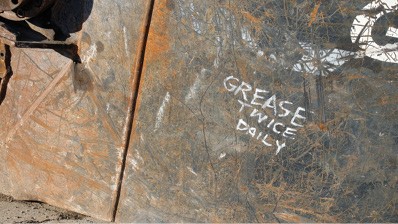
Near constant grease
Grease is key to maintaining attachments, Hughes says.
“Grease—you can never emphasize enough grease,” he says. “Grease has a huge impact on any of these tools.”
However, Williams says it is not a simple matter of buying a single grease product and using it for every attachment that a company operates.
“For the shear, for the pressure that it’s working under, it requires a certain type of grease,” he explains.
Williams says to make sure the grease used for an attachment has the exact properties recommended by the attachments’ manufacturers.
Hammers, on the other hand, require hammer paste, which is a completely different product, he adds. With their high-impact, rapid motion, hammer bits generate more heat than shears, and hammer paste withstands higher temperatures without melting or liquefying.
Not only do equipment operators need to use the correct grease, but they also must understand the attachment’s maintenance requirements well and take the time to grease each attachment on a regular basis.
Hughes says the main pivot points on the upper and lower cylinders of Genesis attachments should be greased twice daily, whereas the slewing ring and stick connection to which attachments are pinned should be greased daily.
Grapples have pivot points where the tines bend that require grease every four to eight hours of operation. Operators also must regularly grease the rotation head, Williams adds.
“It’s important to keep them clean, making sure things aren’t getting caught between the blades and tines,” he says of grapples.
“The key to breakers is grease, grease, grease,” Williams says. “When you’ve got that tool breaking concrete, make sure that you can see grease on that tool bit. If you can’t, if [the tool] is dry, that is when you’re doing damage to your bushings.”
Shears also require regular greasing. According to the owner’s manual for the Genesis GXP Mobile Shear, nine areas require grease every four hours of operation: the bracket pivot, bracket cylinder, shear cylinder butt, shear cylinder rod, the main shaft and pivot (both sides), rotation bearings in four locations, two locations on the rotation head, the auto guide and the auto guide’s contact surface with the upper jaw.
On the shears it rents, Williams says Alta Equipment includes explicit instructions in an obvious location on the shears to help keep greasing maintenance top of mind for operators.
“What we do for our customers … is we write on the shear itself, [saying], ‘This is what you need to,’” he says.
On larger projects, a lube truck could circulate around the job site to grease equipment, Hughes says.
“On the demo side, you’re not going to see that too much unless they’ve got a humongous project where they’re going to be for a year,” he says.
In addition to greasing parts per the manufacturers’ instructions, operators must torque various bolt-on attachments. If bolts aren’t tightened regularly, parts loosen, placing more stress on other sections of the attachment, including the shaft and bearings, Williams says.
“When you start putting stress on that stuff … that’s when it gets [really] expensive because we have to literally dip the shaft in a vat of liquid nitrogen in order to shrink it to remove and install the bearings,” he says.
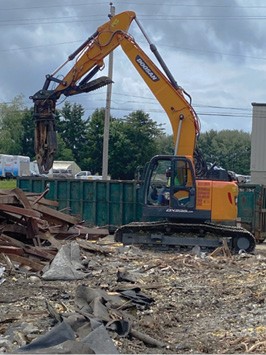
Close examination
Williams says shears are the most maintenance-intensive of the attachments used by demolition contractors.
“In the scrap and demolition world, shear blades and their maintenance [are] the No. 1 thing that can cause downtime and very expensive repairs,” he says, adding that for every 40 hours of operation, shears require eight hours of service.
In addition to greasing moving parts and torquing bolts, Hughes says it’s important for operators to flip the blades regularly. If an operator does not flip a blade soon enough, it could prevent him or her from doing so at all because the rounded blade edge can permit movement in the seating.
“If you go too long on one side, you might be losing the other side because once you flip that shear blade out and put [the old cutting edge] in the blade seat and it’s rounded badly, it wants to roll out of that seat,” he explains.
Williams agrees it’s critical that shear blades fit tightly in their seating, warning that an ill-fitting blade can damage other parts of the shear, such as the seat itself. Bolts hold the blade in place, but the blade needs to be completely flush with the seating so it doesn’t move around when cutting metal.
If the seating gets damaged, Williams says it is possible to repair it; however, he recommends that operators inspect blades regularly, so they notice when the edges become dull and when the blade seating is becoming gouged. If a shear goes too long between blade rotations or fixing gouges in the blade seating, the repairs become more costly and time-consuming.
“If you allow these pockets to wear out and the blades to get loosened, then you can actually start to crack the upper jaw or the lower jaw [of the shear],” Williams says.
Ultimately, that could lead to ordering a new upper or lower jaw, and, with the current supply chain challenges, that could take months, he adds.
Hughes says operators using concrete cracker jaws need to watch for wear, as well. If teeth become dull and are not fixed, consequences quickly can follow.
“First, your performance goes way down,” Hughes says. “If you have a tooth with a sharp point and then, next thing you know, it looks like your fist, you’re going to lose some production.”
To help operators track wear, Hughes says Genesis offers templates they can hold up against teeth.
“You can see how much of that tooth is gone because the templates are mirror images of new teeth,” he says. The templates show 75-, 50- and 25-percent wear points, allowing operators to track wear.
Dull shear blades are likely to cause damage to the rest of the attachment because they rely on closing tightly to cut metal. This is not the case with concrete crackers and pulverizers, which crush but don’t cut, Hughes says.
Who maintains the equipment?
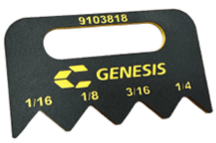
The longevity of an attachment is dependent on the skill of operators but also on their attitudes toward the equipment, Williams says.
“You have to have good operators—operators who care about the tool they’re using and know that’s their office and that it’s what keeps them employed and making money,” he says.
Williams says Alta offers maintenance service for its customers, adding that the company has trucks it sends to job sites to help repair and maintain equipment.
“We can do it for you, and we know all the [information]. If you want to do it in-house, we can supply you with all the stuff; we can give you the plans and the preventative maintenance programs,” he says.
Williams says a service agreement provides peace of mind for contractors and can be cheaper than experiencing extended downtime.
“If equipment goes down and breaks while you’re on the job, it’s costing thousands of dollars an hour to be broken and your crew to be doing nothing and your trucks to be backed up,” he says.
Whether contractors choose to hire their own maintenance personnel, ask operators to maintain equipment or opt for a service agreement, it’s clear that properly maintaining attachments is the least expensive way to keep them running for years.
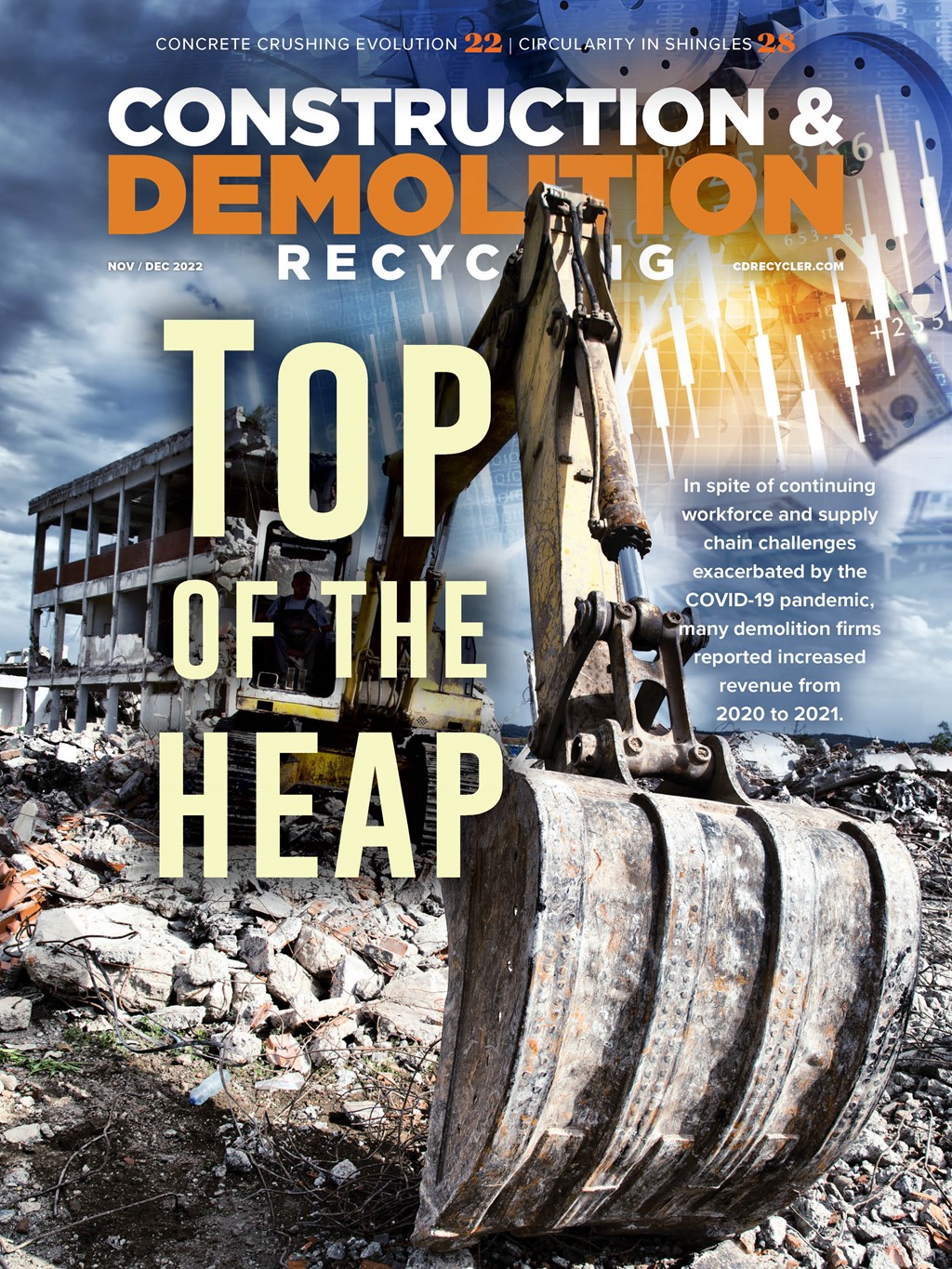
Explore the November December 2022 Issue
Check out more from this issue and find your next story to read.
Latest from Construction & Demolition Recycling
- Connect Work Tools names new service manager
- Architects’ billings slow, contractors stay busy into summer
- RMDAS figures show ferrous still in a trough
- Mt. Diablo receives RCI certification at Pittsburg, California, C&D facility
- Plastics recycling company wins top prize at NextCycle Colorado Pitch Competition
- Arena-sized venue is demolition target in Alabama
- Brandt scrap handlers available through Murphy Tractor
- Hendrickson celebrates Tiremaax installation milestone





